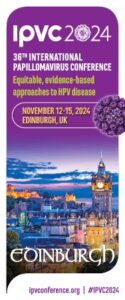Recently, that fear intensified when the Department of Defense announced that it discovered for the first time a strain of the bacteria Escherichia coli (E. coli) infecting a patient in the U.S. that carries the gene called mcr-1. The gene makes the bacteria resistant to colistin, a polymyxin, which is a class of antimicrobials considered to be a “last resort” to treat patients with multidrug-resistant infections. Polymyxins are also used in livestock.
The woman, a resident of Pennsylvania, responded to other antibiotics and has now recovered. But what makes the discovery especially concerning, according to the U.S. Centers for Disease Control and Prevention (CDC), is that the mcr-1 gene, first identified in China last year, was found not on a chromosome but on a plasmid, a transportable piece of DNA. When a resistance gene is part of the genome, it is only spread to the offspring of that bacterium, but when it is on a plasmid, it can easily be spread to other bacteria, making them resistant to antibiotics. Since the mcr-1 gene was found on a plasmid, it can move to other bacteria and make them resistant to the polymyxin antibiotics.
The CDC and other public health experts are examining close contacts of the Pennsylvania woman, including healthcare practitioners and family members, to see if any of them acquired this resistant strain of E. coli and may be at risk for spreading the bacteria that contain the mcr-1 gene to others.
Particularly concerning for health experts, though not yet a threat, is the possibility that the mcr-1 gene could transfer to bacteria that are already resistant to other last resort drugs, such as carbapenem-resistant Enterobacteriaceae, commonly called CRE, which causes death in half of all cases. (Read also CRE Superbugs Rising Threat in U.S.)
Since the discovery of the gene in China last year, health experts have now found at least one type of bacteria that harbors themcr-1 gene on every continent. In addition to the woman in Pennsylvania, researchers in the U.S. have found other examples of the mcr-1 gene, in pigs’ intestines.
Starting next fall, up to eight labs in the U.S. will have all the technology and instrumentation needed to detect resistant organisms suspected in human samples. Those labs will serve as reference laboratories for the U.S. states and territories.
According to Jean Patel, PhD, Director of the Office of Antibiotic Resistance of the CDC, the new labs will be able to detect new forms of antibiotic resistance—including mutations that allow bacteria to survive the effects of the last-resort drugs like colistin—and report these findings to CDC. That will allow faster investigations and infection control for future resistance threats, says Dr. Patel.
Dr. Patel explains that the new efforts are another layer in the focus that the CDC already has on improving antibiotic use. “Expect to have a conversation with your doctor when an antibiotic is being considered. There’s likely to be more watchful waiting to see if the infection progresses rather than quickly reaching for an antibiotic.”
People can also expect more testing if there is a potential infection and an antibiotic is being considered, says Dr. Patel. For example, while many healthcare practitioners often prescribe an antibiotic over the phone if a woman has a urinary tract infection, experts say it’s much more likely now that providers will require a urine culture. They will wait for results about whether there is an infection and for identification and the antibiotic susceptibility pattern of the bacteria before prescribing an antibiotic drug.
Dr. Patel says that many diagnostic tests have become better and faster, like strep tests, which now come in rapid versions that allow results during an office visit. In fact, various tests for infectious diseases have been improved to provide more timely,sensitive and specific results. Such tests can help quickly determine whether antibiotics are needed and allow for a more appropriate choice of antimicrobial therapy that targets the specific bacteria causing the patient’s infection.
Source: LTO



















































